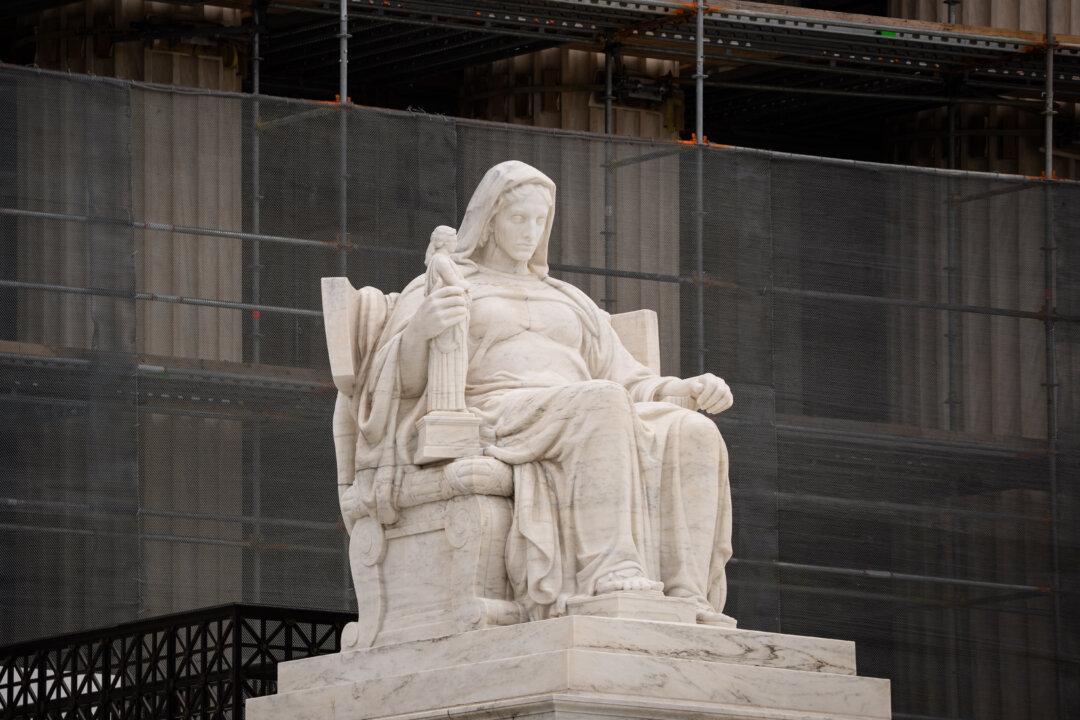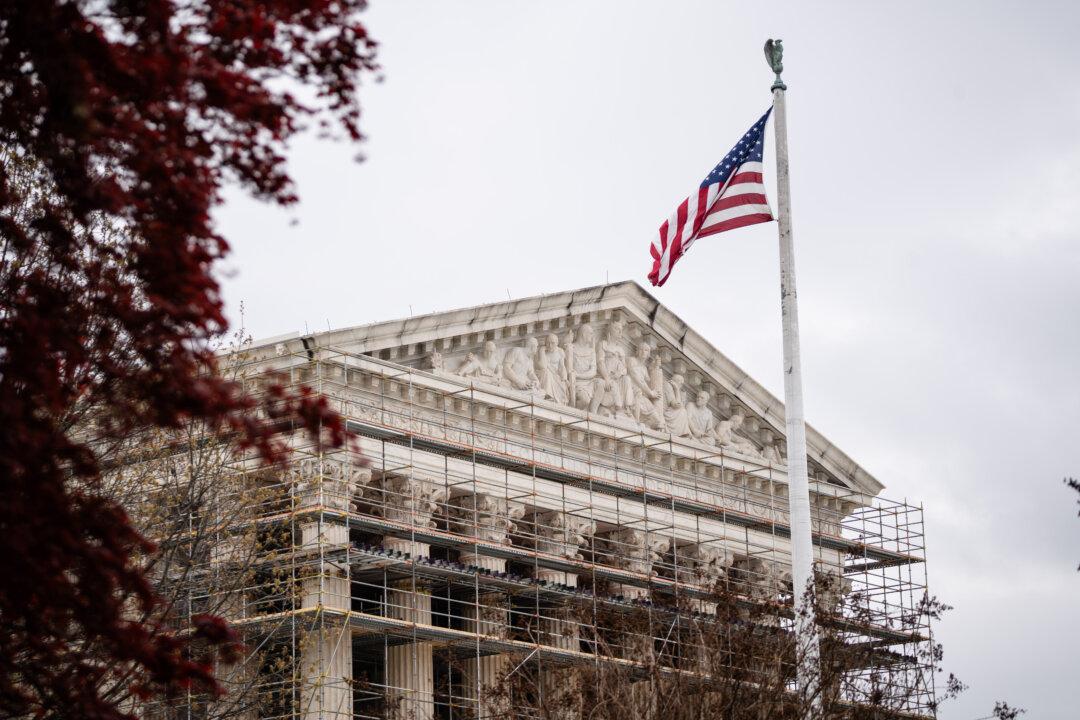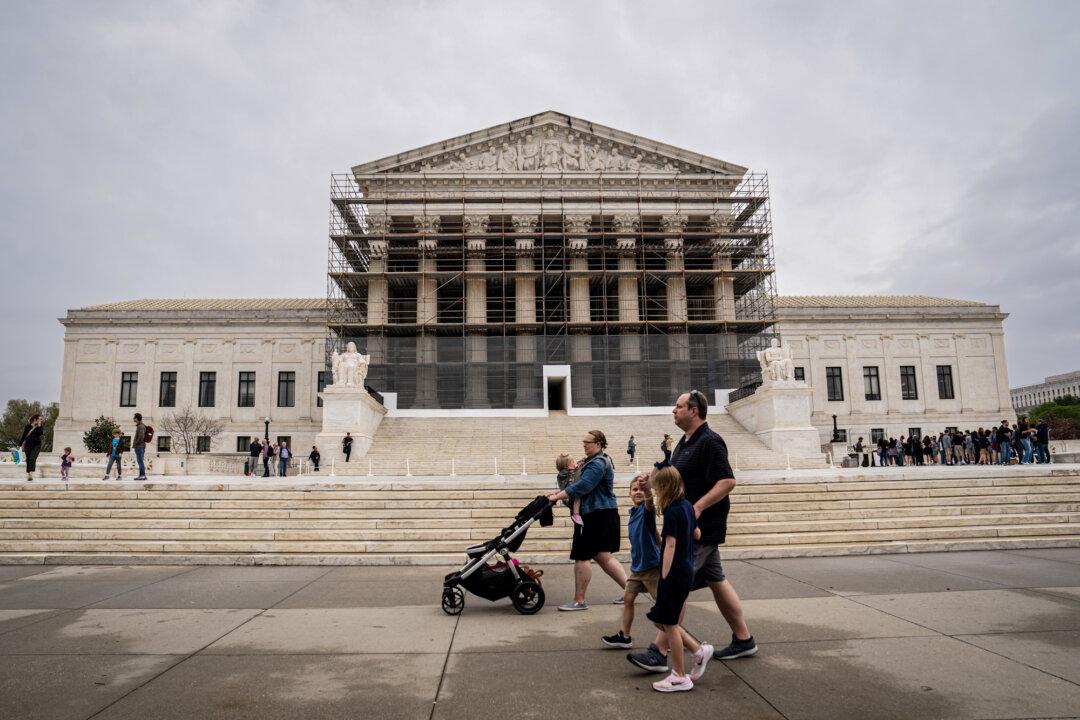The Supreme Court gave a cool reception to the Biden administration during oral arguments on Nov. 29 in a case in which a health care system was seeking higher government reimbursements for treating low-income patients.
The case, on appeal from the U.S. Court of Appeals for the 9th Circuit, is Becerra v. Empire Health Foundation, court file 20-1312. Xavier Becerra is U.S. secretary of health and human services.
At issue is how the U.S. Department of Health and Human Services (HHS) figures out special Medicare payments to “disproportionate share hospitals,” sometimes called “DSH hospitals,” whose patients are largely low-income persons.
Empire Health attorney Daniel Hettich told the high court during oral arguments that the department hasn’t been satisfying its legal obligations.
“In the face of HHS’s recalcitrance, Congress gave HHS detailed instructions to ensure that hospitals that treat a disproportionate share of indigent patients are properly reimbursed,” Hettich said.
“HHS has repeatedly violated those clear instructions and has done so again here.”
Elderly and disabled people receive health insurance by virtue of the Medicare Act, under which hospitals generally take in fixed-fee payments for services rendered. Hospitals are paid predetermined amounts for each Medicare patient treated but DSH hospitals receive higher fees to cover the increased cost of treating low-income individuals, who are often in worse health.
HHS augments payments to DSH hospitals using a mathematical formula. The department adds two fractions, known as the Medicare fraction and the Medicaid fraction, both of which separately measure a hospital’s low-income patients. Medicaid is a joint federal-state program that treats the indigent. Sometimes individuals qualify for both programs at the same time and are referred to as “dual eligibles.”
“The Medicaid fraction estimates the percentage of a hospital’s low-income Medicaid patients by measuring the percentage of the hospital’s patients who were eligible for Medicaid but not entitled to Medicare. ... Medicare beneficiaries are excluded from the Medicaid fraction numerator to avoid double counting patients who get both Medicare and Medicaid coverage.”
How to interpret the phrases “entitled to” and “eligible for” in the fractions is disputed.
“The phrase ‘entitled to’ is used when referring to Medicare patients while the phrase ‘eligible for’ is used when referring to Medicaid patients” SCOTUSblog states. “These phrases have long and jumbled histories, and those histories help muddle attempts to pin down their current meaning.”
Hettich told the justices the department’s interpretation of the law was “impermissible” because it “violates the plain meaning of the statute.”
“The agency reads the statutory terms ‘entitled’ and ‘eligible’ to mean the same thing. That is both inconsistent with the ordinary meaning of ‘entitled’ and contrary to how the agency interprets ‘entitled’ in the same sentence of the statute,” he said.
Jousting over the meanings of words continued throughout the hearing. The justices at times bemoaned how unclear the language of the statute was.
Justice Clarence Thomas told Justice Department attorney Jonathan Bond that the law was bogged down with “indecipherable language.”
Justice Sonia Sotomayor told Bond the law is convoluted. “Can you point to any other statute where Congress applies 3 meanings to the same word?” she asked.
The so-called Chevron doctrine, under which courts defer to agency interpretations of the statutes they enforce, was also in play. In Chevron v. Natural Resources Defense Council, the Supreme Court ruled in 1984 that an executive agency’s interpretation of a statute it administers is entitled to deference unless Congress has indicated otherwise.
Sotomayor also asked Bond how the court would “give you any Chevron deference” for the government’s preferred interpretation of the law.
During a discussion of patients exhausting their benefits, Justice Stephen Breyer engaged in wordplay with Bond, saying such people “are exhausted, just like me after reading this case, okay?”
“If I were in Congress and I had this issue in front of me, you know what I would say? Let the agency do what it wants as long as it’s reasonable because I have no idea,” Breyer said.
“And so my question is, how are we expected, nine people, when only two people in the United States in [a public comment period in] 2003 understood it in the way of comments, how are we supposed to decide who’s right?”
Breyer told Hettich this was a “pretty difficult case for me” and that he is “actually baffled.”
“I have an awful qualm about using Chevron here, because the point of it is supposed to be that a reasonable member of Congress would have wanted the agency to figure this out, and where it ... gets everything mixed up, it’s a pretty tough case to use Chevron.”
Hettich replied, “In some ways, this is ... an easy case ... because the secretary’s interpretation ... requires departure from the ordinary meaning of ‘entitled.’”





